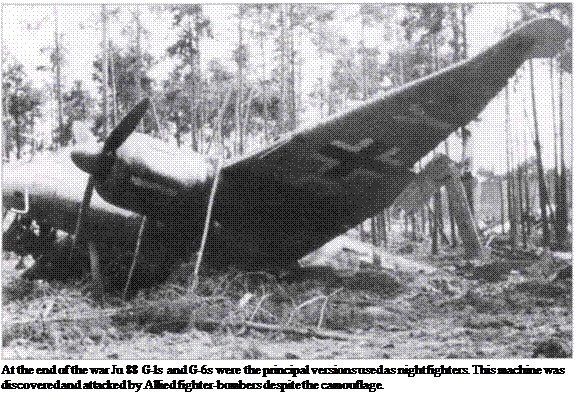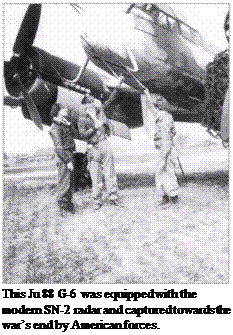First Operations with the Ar234 C-3
Although the situation was in reality hopeless, at the end of April the new four – turbine Ar 234 versions began to arrive at unit. The first pair of Ar 234 C-3s (Works Numbers 250002 and 250004) arrived at Alt-Lonnewitz in the second half of March, and were test-flown on the 27th by Unteroffizier Eheim. During these flights, Knight s Cross holder Lukesch – according to some reports – reached an altitude of about 15,000 metres (49,000 ft). Another three Ar 234 C-3s arrived at the beginning of April at III./EKG 1. These were listed for pilot training.

By 16 April, Russian armies had assembled between the Neisse Estuary and the Oder for the final offensive on Berlin. III./EKG 1, the operational training Gruppe at Alt-Lonnewitz, could soon hear artillery fire, and on 19 April the unit transferred to Pilsen, bringing all serviceable operational and training machines to safety. One Ar 234 C-3 crashed on landing for unknown reasons.
Lukesch flew the penultimate machine, an Me 262 B-la, with his leading ground technician as passenger. After Hauptmann Reymann followed him in an Me 262, the installations were blown up. After the second Ar 234 C-3 was destroyed in an air raid at Pilsen, at the end of April the stock of jet bombers was reduced to one Ar 234 C-3 and a few Ar 234 B-2s.
 On 27 April III./EKG 1 transferred to Pocking am Inn on the orders of the Airfield Servicing Company (FBK) in order to avoid being cut off. Pocking is 20 kilometres southwest of Passau. Shortly before the transfer the Germans were surprised by an air raid in which all but two of the jet bombers were either damaged or wrecked. Eventually only one C-3 and one B-2 arrived at Pocking. The last serviceable C-3 was blown up shortly before the arrival of US forces. The last III./EKG 1
On 27 April III./EKG 1 transferred to Pocking am Inn on the orders of the Airfield Servicing Company (FBK) in order to avoid being cut off. Pocking is 20 kilometres southwest of Passau. Shortly before the transfer the Germans were surprised by an air raid in which all but two of the jet bombers were either damaged or wrecked. Eventually only one C-3 and one B-2 arrived at Pocking. The last serviceable C-3 was blown up shortly before the arrival of US forces. The last III./EKG 1
machine, an Ar 234 B-2, was flown by Oberfeldwebel Oepen to Horsching (Linz) and handed over to l.(F)100. On 29 April, III./EKG 1 was disbanded by Luftflotte 6.
Besides the Ar 234 C-3 which arrived on 28 April, III./KG 76 received a further four up to 3 May. One of these was the former prototype Ar 234 V-25 (RK+EO) coming from Brandenburg-Briest. It had touched down first at Warnemiinde on 15 April, from where it flew to Kaltenkirchen on 1 May. As the B-4 fuel needed for the BMW 003 turbines was almost impossible to obtain, attempts by KG 76 to test-fly the aircraft as ordered were unsuccessful at the outset. Two or three missions were flown after arrival. In one of these, British positions south of Bremervorde were attacked on 3 May. The following day terms for unconditional surrender to the Western Allies in northern Germany were accepted, and the remaining operational machines at KG 76, insofar as they were serviceable, were flown north using the last drops of fuel to be surrendered to British forces.










